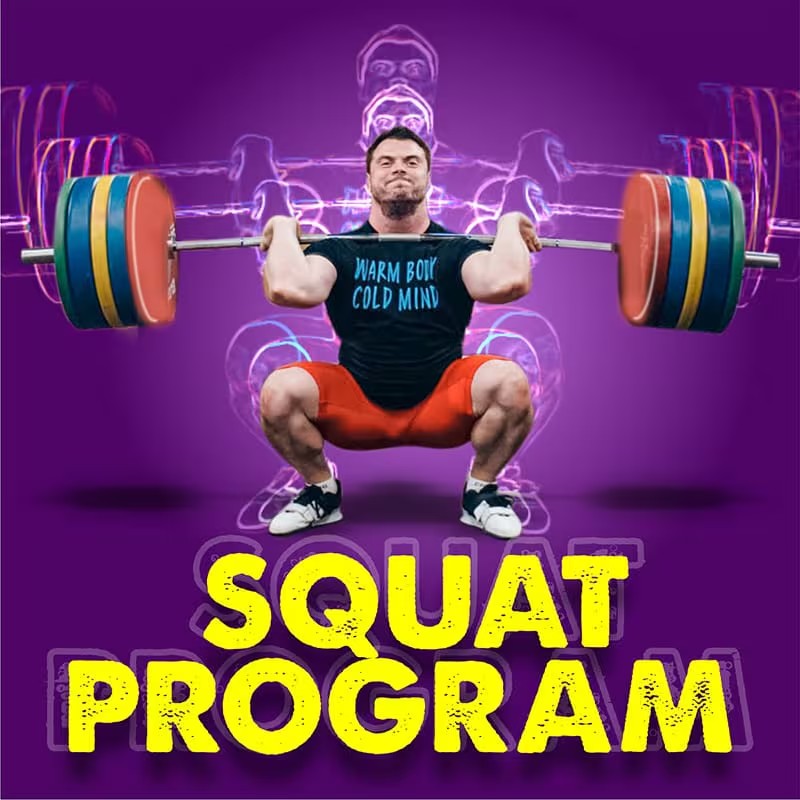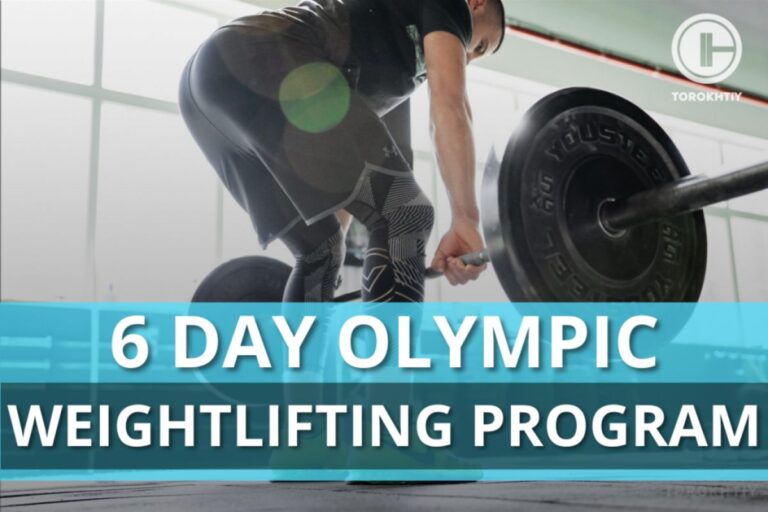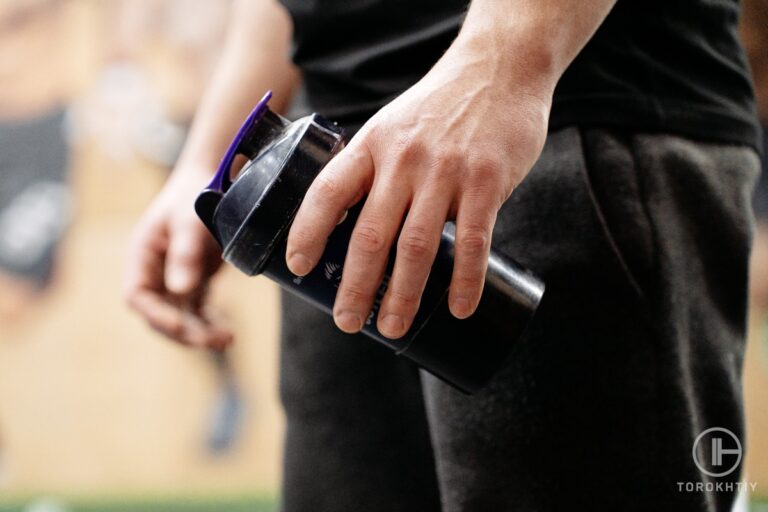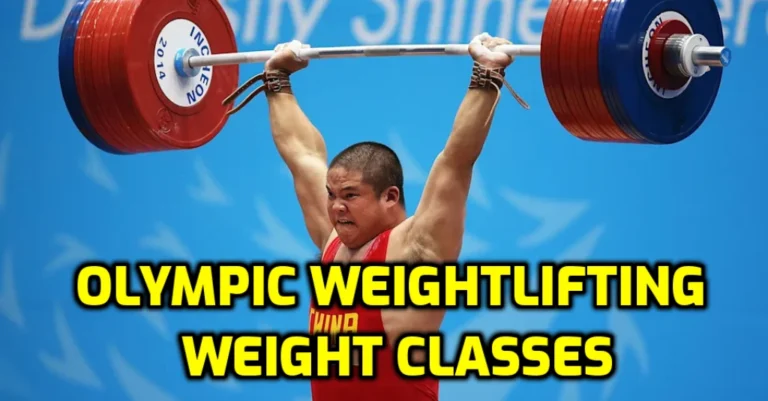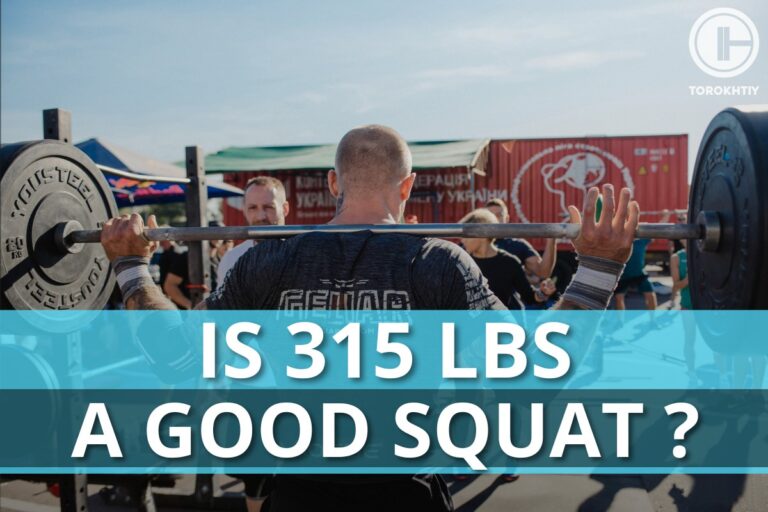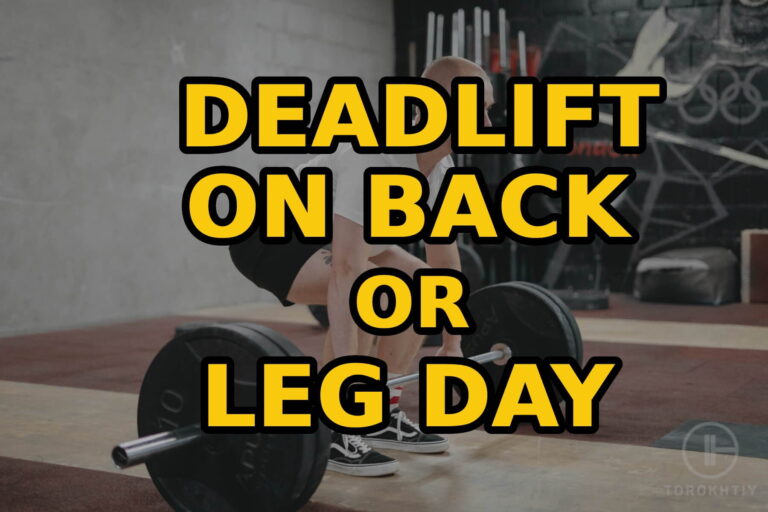How to Breathe During Squats? Techniques and Exercises
Squatting with good technique is just one part of a good squat performance. Learning how to breathe during squats can help to maintain trunk stability and maintain the correct body position, improving squat performance and limiting the risk of injury.
How to Breathe During Squats – Breathing during squats involves taking a large breath and holding it for full repetition. This is especially important during low-rep squatting. Tighten your stomach, breathe into your stomach, and expand your sides before squatting down to perform a proper brace.
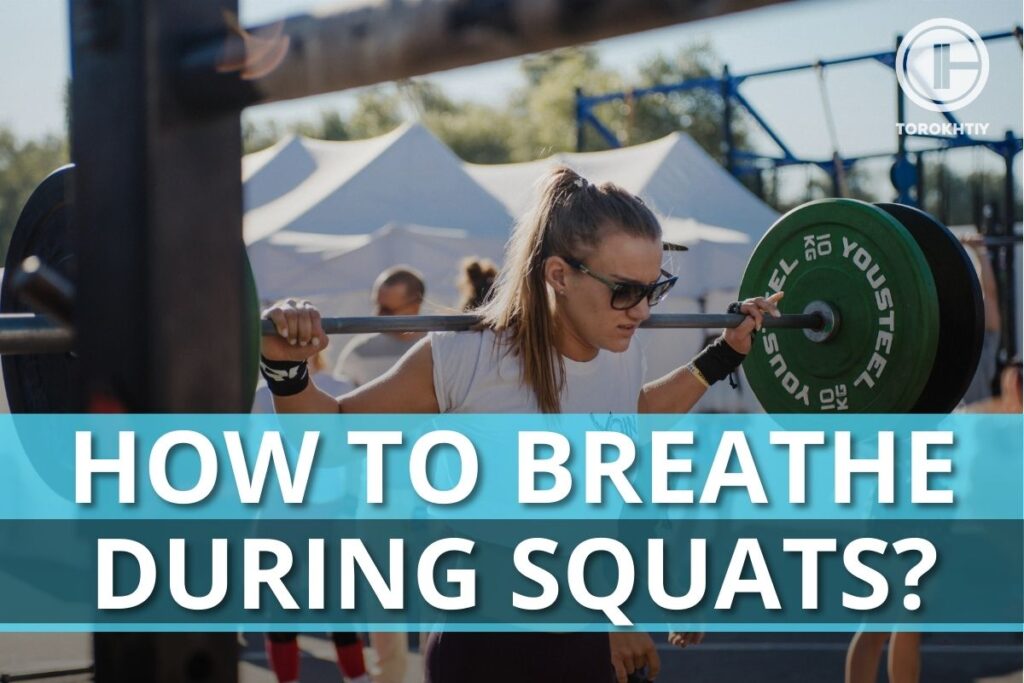
Why Is It Important to Control Breath During Squats?
When using our primary breathing muscles and performing the correct patterns, our diaphragm flattens to create intra-abdominal pressure. This causes our abdomen to expand in all directions alongside our rib cage and lower back. When we exhale, the same areas narrow down, allowing efficient gas exchange and therefore a better quality breath.
The increased intra-abdominal pressure created by the correct breathing pattern and technique helps to improve posture and body position when squatting, improving performance and reducing the risk of injury.
Controlling your breath during squats is important to maintain the intra-abdominal pressure (also known as a brace). The barbell weight places increased demand on our body to stabilize our trunk position and maintain posture. To meet these demands, we need to increase our core stability by using our core as a platform which we generate efficient movement from.
When most people squat, they take a shallow breath into their chest and pull their stomach inwards. Following this, they inhale on the way down and exhale when going up. Unfortunately, this provides little resistance against the barbell load, increasing spinal pressure and the risk of injury when lifting.
Controlling your breath when squatting is vital to maintaining a proper brace and efficient gas exchange, helping to improve performance and limit the risk of injury. Different breathing techniques can be used for different lifting intensities which will be explained below.
Proper Breathing Technique for Squatting
Now that we’ve explained the importance of controlling your breath, let’s look at how to breathe when squatting to improve performance and reduce the risk of injury.
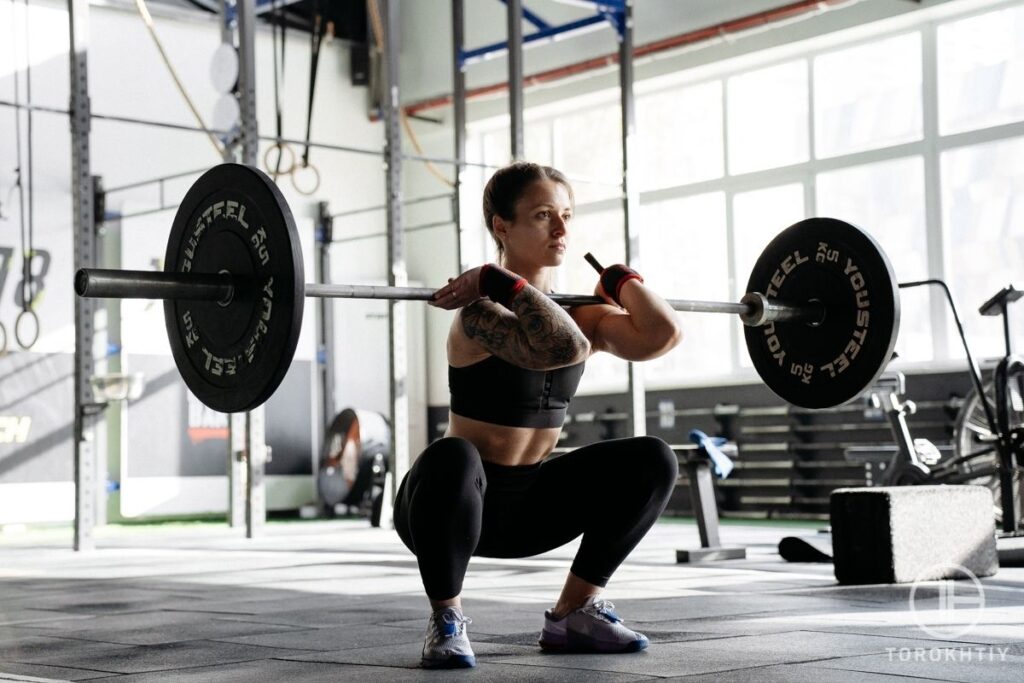
1. Low-Rep Squatting
When lifting heavy weights during low-rep sets, we use a breath to create trunk stiffness and stability which reduces spinal pressure by keeping it in the same position under load. A decent breath creates more internal pressure allowing for a better quality brace and performance.
During heavy-rep work, look to perform a valsalva maneuver to increase intra-abdominal and intrathoracic pressure. This can be done as follows:
• Take a Deep Belly Breath
Focus on contracting your abdominal wall, sides of your body, lower back muscles, and hips to pressurize the entire area. Breathe into your belly whilst focusing on contracting the areas stated above. Try to pretend you are about to get kicked hard in the midsection.
• Exhale Against Your Closed Glottis
Your glottis is what allows air in and out of your windpipe when breathing. Closing it before exhaling allows you to create more intra-abdominal and intra-thoracic pressure.
• Continue to Exhale Against Your Closed Glottis as You Lift
Exhale against a closed glottis for the entirety of the lift. Focus on not letting air out of your mouth and maintain the contraction as you move.
• Exhale to Release the Air Once the Repetition Is Complete
Release the air from your glottis once the repetition is complete. Repeat the process for the next rep, going through the same steps.
Whilst the Valsalva maneuver isn’t without risks, it’s worth doing when performed correctly.
2. High-Rep Squatting
During longer repetition sets, obviously you won’t be able to hold your breath for long periods like low-rep sets. Even so, we still need to keep some trunk stability to protect the spine from increased pressure and produce enough power throughout the squat.
Breathing into our mid-section whilst maintaining a decent brace isn’t easy, meaning practice is needed to perfect the technique. High-repetition squat sets may involve taking a breath every one or two reps depending on your preference.
High-rep squat breathing should be performed as follows:
• Perform the Same Valsalva Maneuver as Described Above
Breathing during high-repetition sets is mainly the same as the low-repetition sets as described above. The main difference relates to taking the breaths in between reps.
• Take a Breath as Needed Every 1 to 2 Reps
Take a breath as needed but focus on keeping the brace when doing so. Try to blow the air out from a tight cylinder and take an easy breath in, sucking into the same tight area. Whilst it feels like there isn’t as much air, the breath will be better quality.
• Time Your Breathing or Breath in a Rhythmic Pattern
Breathing in a rhythmic pattern may help with higher-repetition squat sets where conditioning is more of a factor. Time your breathing with each squat rep or experiment with whether you need to breathe every one or two reps first.
• Be Aware of When You Are Breathing
During high-repetition sets, being aware of when you’re actually breathing and how that is helping you can help to focus on each element of the Valsalva maneuver whilst following the steps above.
High-repetition squat breathing will take practice and shouldn’t be taken lightly. Practice the steps above and realize that you won’t perfect the right technique overnight.
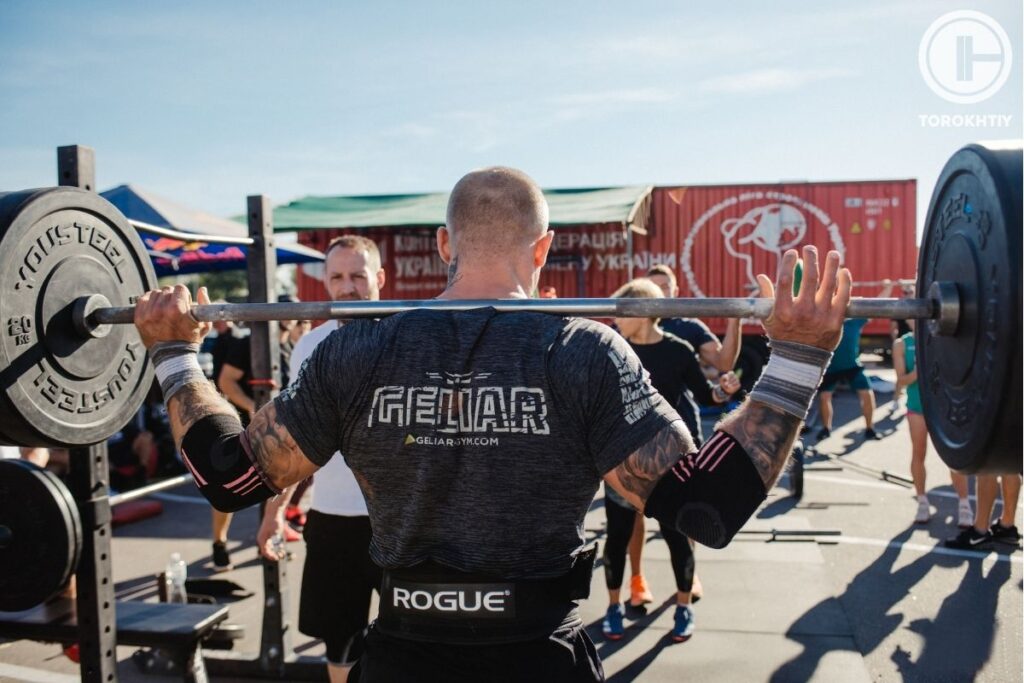
Exercises and Other Things That Can Help to Breath and Brace Properly During Squats
Alongside the breathing techniques listed above, certain lifting accessories and breathing techniques can be used when squatting to help brace and breathe correctly. Here are a few of the main ones below:
1. Wearing a Belt
Wearing a lifting belt correctly increases intra-abdominal pressure, providing a stable lifting base and reducing the risk of injury.
When you brace to create more intra-abdominal pressure when wearing a lifting belt, the belt provides a hard surface to brace against. This then helps you with the bracing cues described above and creates more pressure than you could without one.
Bare in mind that a lifting belt should not be used all the time and should not act as a crutch for good bracing technique. Make sure you know how to brace first and use a belt only when needed for the heavier squat sets.
2. Crocodile Breathing
Crocodile breathing is an exercise or technique that’s designed to help you learn diaphragmatic breathing during the squat.
- Begin face down to the floor with your stomach on the floor and forehead in your hands. Make sure you are as flat as possible like a crocodile would be.
- Breathe through your nose and allow the air to pass through your chest into the stomach. Your abdomen should start to push out against the ground without you forcing it.
- Take a low and slow nasal inhalation for 3 seconds and briefly pause.
- Take a full and slow nasal exhalation for 4-6 seconds and pause for 2-3 seconds.
- Repeat the next breath cycle.
The crocodile breathing exercise can be done as part of a squat session before squatting or after a session/ at home as you wish.
🔻12 Week Squat Program by Oleksiy Torokhtiy
Do you want to double your squat strength? In just 12 weeks, you’ll be able to boost your squat results.
This program transforms any ordinary squat into a powerful athletic movement.
What’s included:
- 12 weeks of squat programming;
- Effective combination of sets, reps, and weights;
- Fully designed and coached by Oleksiy Torokhtiy;
- Over 60+ movements, banded work, and weight training;
- Accessory work for core, joint stability and injury prevention;
- Max out on back squat and front squat at the end.
Start now and boost your squat results!
3. Nasal Breathing
Nasal-only breathing involves only breathing through the nose instead of the mouth or nose and mouth together.
Your mouth is designed to help you eat, drink, and talk. It can also be used to breathe but unlike the nose, it doesn’t possess many of the unique features that may help with breathing during squat performance.
Your nose is designed to filter out foreign particles, warm inhaled air, and produce nitric oxide when breathing which may help to increase blood flow in your body. Nasal breathing when bracing may help to strengthen the diaphragm and improve lung capacity but the research looking at performance improvements with nasal breathing is quite mixed.
Perform the breath of fire exercise to practice nasal breathing. It helps you to focus on engaging your diaphragm and respiratory muscles whilst breathing in and out of your nose:
- Sit up tall and place your hands on your stomach or knees with your palms facing upwards.
- Inhale deeply through your nose whilst imagining air moving into your stomach. Allow your abdomen to expand.
- Exhale forcefully through your nose whilst allowing your stomach to move inwards.
- Continue the same process for 30 seconds before taking a rest.
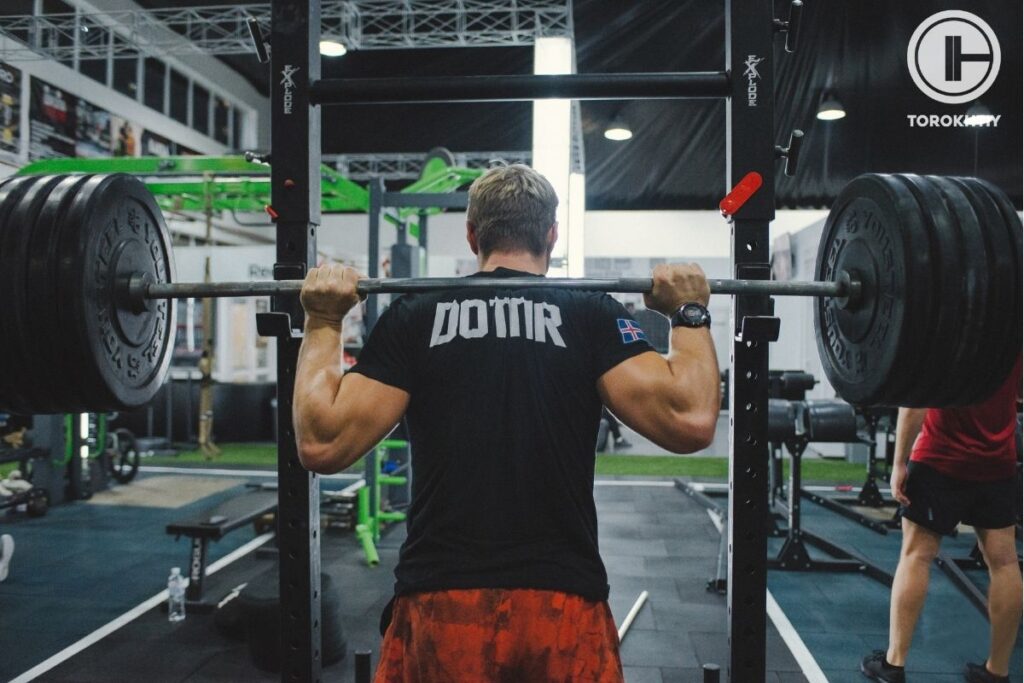
Things to Avoid when Breathing During Squats
Avoid these common breath mistakes when lifting to maintain a strong core during squatting events:
1. Don’t Squeeze Your Abdominals
Bracing involves expanding your stomach and rib cage outwards rather than squeezing your abdominals. Breathing correctly to brace is more of a pushing action.
Take note of all the muscles involved in a deep breath and brace rather than just thinking it’s the abdominals. Focus on each muscle and element when performing each breath during squat performance.
2. Don’t Pull Your Belly Button Inward
Pulling your belly button into your spine won’t create a rock-solid trunk when lifting. The act of retracting your belly inwards doesn’t necessarily create inwards pressure and engage your deeper muscles such as your obliques, lower back, and deep core muscles.
Imagine filling your whole abdominal space with air before breathing.
3. Don’t Perform the Wrong Technique
Deviating from the optimal squat technique takes the focus away from correct breathing. This then ruins the brace and affects squat performance.
Choose the correct foot placement and don’t allow your heels to lift whilst you squat to depth. Keep the correct muscles engaged and don’t lose the correct technique (head up, chest out, back neutral) by lifting too much weight too quickly.
The Habit of Breath Stops During Squatting: Pros and Cons
Holding your breath when squatting to maintain a brace has several advantages and potential disadvantages if not done correctly:
1. Pros of Breath Stops
✅ Improved trunk stability by maintaining infra-abdominal pressure
✅ Easier to maintain a proper brace between repetitions
✅ May help to maintain the correct form and reduce the chances of injury when squatting
2. Cons of Breath Stops
❌ May cause fainting / dizziness if not done correctly
❌ May temporarily increase heart rate and blood pressure
❌ May increase pressure on the eyes, making it unsuitable if you have certain eye conditions
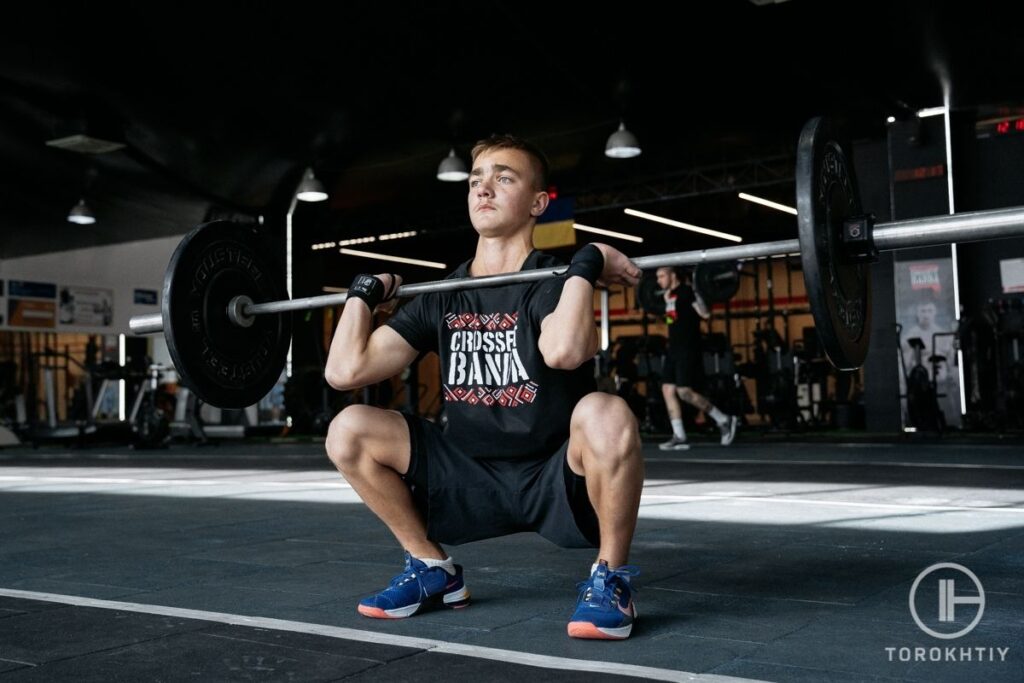
FAQ
Do You Inhale or Exhale Before Squats?
Whether you’re performing high or low-repetition sets, performing a deep abdominal breath before squatting is vital to create intra-abdominal pressure and maintain trunk stability. A breath should be released during the ascent when you reach the sticking point but with force and tension.
Why Do You Hold Your Breath When Squatting?
Holding your breath when squatting is vital to maintain intra-abdominal pressure which helps to maintain trunk stability and keep your body in the correct lifting position. This, in turn, limits the chances of injury and helps to improve squat performance.
Is It Okay to Hold a Breath When Lifting Heavy?
When lifting heavy and during normal lifting, take a breath at the top position before lifting the weight. Maintain the breath as you go to the bottom position and let the breath out as you ascend the weight or your body back to the starting position. This should be done forcefully at the sticking point.
Conclusion
Breathing correctly during high and low-repetition squats is important to maintain trunk stability, correct posture, and limit the chances of injury. Follow the steps above to maintain the correct brace and intra-abdominal pressure when lifting to reduce the amount of spinal load experienced.
Do you focus on breathing when squatting? What technique do you use? Chat to me in the comments section below.
References:
- Shivak Srivastav, Radia T. Jamil, Roman Zeltser, “Valsalva Maneuver,” PubMed (2023). Available at: https://www.ncbi.nlm.nih.gov/books/NBK537248/#_ncbi_dlg_citbx_NBK537248 (Accessed January 1, 2024)
- Daniel A. Hackett DA, Chin-Moi Chow, “The Valsalva maneuver: its effect on intra-abdominal pressure and safety issues during resistance exercise,” Journal of Strength and Conditioning Research 27, no.8 (2013):2338-2345. doi:10.1519/JSC.0b013e31827de07d
- Jeffrey E. Lander, Leslie R. Simonton, Joel K. Giacobbe, “The effectiveness of weight-belts during the squat exercise,” Journal of Medicine and Science in Sports and Exercise 22, no.1 (1990):117-126.
- Testosterone Nation, “Crocodile Breathing,” YouTube. Available at: https://youtu.be/2ibSb6jQ3Ec?si=pW1cDbdIxBiH6uQM (Accessed January 1, 2024)
- Christine Recinto, Theodore Efthemeou, P T. Boffelli, James W. Navalta, “Effects of Nasal or Oral Breathing on Anaerobic Power Output and Metabolic Responses,” International Journal of Exercise and Sports Science 10, no.4 (2017):506-514. PMC5466403
Why Trust Us?
With over 20 years in Olympic Weightlifting, our team does its best to provide the audience with ultimate support and meet the needs and requirements of advanced athletes and professional lifters, as well as people who strive to open new opportunities and develop their physical capabilities with us.
By trusting the recommendations of our certified experts in coaching, nutrition, dietology, and sports training programming, as well as scientific consultants, and physiotherapists, we provide you with thorough, well-considered, and scientifically proven content. All the information given in the articles concerning workout programming, separate exercises, and athletic performance, in general, is based on verified data. We ensure that you can rely on our professionals’ pieces of advice and recommendations that can be treated as personalized ones which will benefit you and fully meet your needs.
The product testing process is described in more detail here
Author: Sergii Putsov
Head of Sport Science, PhD
Best Results: Snatch – 165 kg,
C&J – 200 kg
Sergii Putsov, Ph.D., is a former professional weightlifter and National team member, achieving multiple medals in the 94 kg weight category at national competitions. With a Master’s degree in “Olympic & Professional Sport Training” and a Sport Science Ph.D. from the International Olympic Academy, Greece, Sergii now leads as the Head of Sport Science. He specializes in designing training programs, writing insightful blog articles, providing live commentary at international weightlifting events, and conducting educational seminars worldwide alongside Olympic weightlifting expert Oleksiy Torokhtiy.

